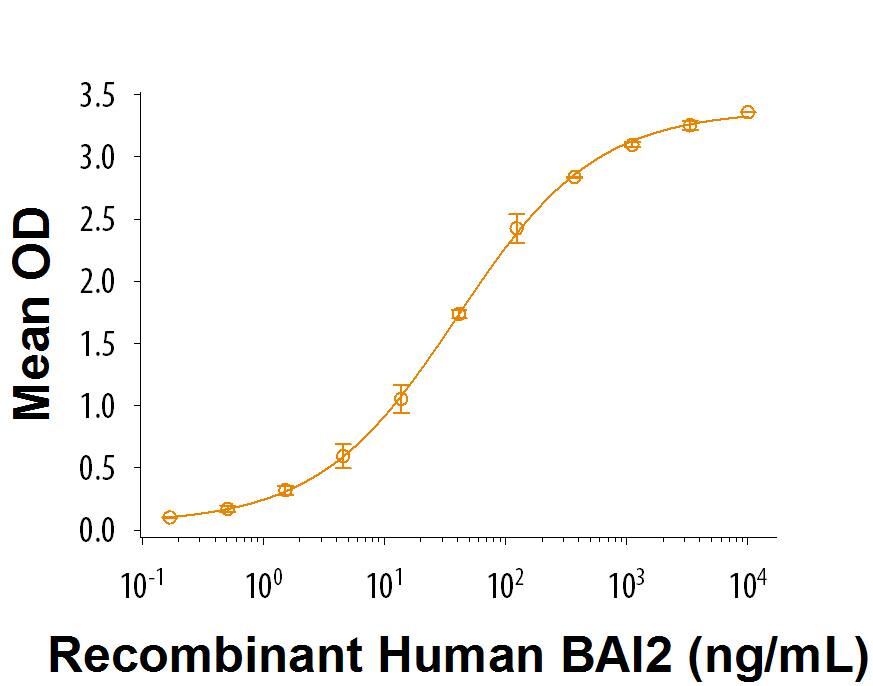Recombinant Human C1qL3 Protein, CF
R&D Systems, part of Bio-Techne | Catalog # 9115-TN

Key Product Details
Source
E. coli
Accession #
Structure / Form
Noncovalently-linked homotrimer.
Conjugate
Unconjugated
Applications
Bioactivity
Product Specifications
Source
E. coli-derived human C1qL3 protein
Ser122 - Asp255, with an N-terminal Met and 6-His tag
Ser122 - Asp255, with an N-terminal Met and 6-His tag
Purity
>85%, by SDS-PAGE visualized with Silver Staining and quantitative densitometry by Coomassie® Blue Staining.
Endotoxin Level
<0.10 EU per 1 μg of the protein by the LAL method.
N-terminal Sequence Analysis
Met
Predicted Molecular Mass
16 kDa
SDS-PAGE
14 kDa, reducing conditions
Activity
Measured by its binding ability in a functional ELISA.
When Recombinant Human C1qL3 is immobilized at 2 μg/mL, 100 μL/well, the concentration of Recombinant Human BAI2 Fc Chimera that produces 50% of the optimal binding response is approximately 25-150 ng/mL.
When Recombinant Human C1qL3 is immobilized at 2 μg/mL, 100 μL/well, the concentration of Recombinant Human BAI2 Fc Chimera that produces 50% of the optimal binding response is approximately 25-150 ng/mL.
Scientific Data Images for Recombinant Human C1qL3 Protein, CF
Recombinant Human C1qL3 Protein Bioactivity
When Recombinant Human C1qL3 (Catalog # 9115-TN) is coated at 2 µg/mL, Recombinant Human BAI2 Fc Chimera binds with a typical ED50 of 25-150 ng/mL.Formulation, Preparation and Storage
9115-TN
| Formulation | Lyophilized from a 0.2 μm filtered solution in Tris, NaCl and TCEP. |
| Reconstitution |
Reconstitute at 500 μg/mL in water.
|
| Shipping | The product is shipped at ambient temperature. Upon receipt, store it immediately at the temperature recommended below. |
| Stability & Storage | Use a manual defrost freezer and avoid repeated freeze-thaw cycles.
|
Background: C1qL3
Long Name
Complement Component 1, Q Subcomponent-Like 3
Alternate Names
C1q-like 3, C1ql, C1qTNF13, CTRP13, K100
Gene Symbol
C1QL3
UniProt
Additional C1qL3 Products
Product Documents for Recombinant Human C1qL3 Protein, CF
Product Specific Notices for Recombinant Human C1qL3 Protein, CF
For research use only
